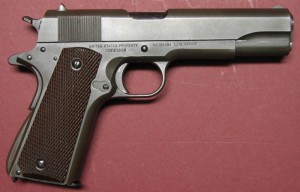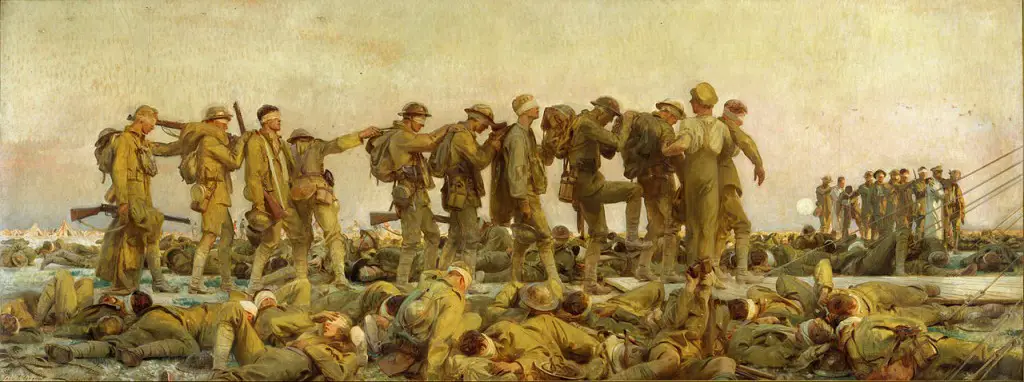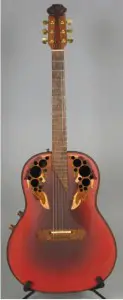Monthly Archives: July 2014
 Florida has different demographics depending on where in the state you are. The East Coast is pushy, abrasive New Yorker boomers. The West Coast, the same. The Southern tip is occupied by whatever Latin American caudillos survived their ouster, and their former retainers. The Panhandle is Where Alabama Meets the Sea®. And the dank, gator-rich and citrus-producing center of the peninsula? It’s Alabama, too, but circa 1960.
Florida has different demographics depending on where in the state you are. The East Coast is pushy, abrasive New Yorker boomers. The West Coast, the same. The Southern tip is occupied by whatever Latin American caudillos survived their ouster, and their former retainers. The Panhandle is Where Alabama Meets the Sea®. And the dank, gator-rich and citrus-producing center of the peninsula? It’s Alabama, too, but circa 1960.
So you get headlines like, “KKK membership sinks 2 Florida cops.”
The 49-year-old [Deputy Chief] Borst, a department veteran of more than 20 years, was also fire chief for the Lake County city of 5,000, about 40 miles northwest of Orlando. He resigned both posts Thursday after being confronted with the FBI report.
Officer George Hunnewell, who was demoted last year over performance and attitude complaints, was fired Friday by Chief Terry Isaacs.
via KKK membership sinks 2 Florida cops.
 No word on whether either one was a “white Hispanic,” but given the Klan’s less-than-inclusive membership traditions, we kind of think not. Just goes to show that Trayvon wasn’t the only Floridian to get into trouble in a hoodie.
No word on whether either one was a “white Hispanic,” but given the Klan’s less-than-inclusive membership traditions, we kind of think not. Just goes to show that Trayvon wasn’t the only Floridian to get into trouble in a hoodie.
It’s a free country, and you can join the Klan if you want. (And we can laugh at you, if you do). But people are going to look askance at a policeman whose other uniform is a pointy-headed burkha with a faint whiff of burning cross to it.
The Shriners may dress funny for parades, but they never terrorized anybody, and they actually have built a lot of hospitals. “Burn center” has a completely different meaning to the brain-deads in KKK Nation.
In 2014 this should not take a lot of figuring out, but then again, on a figuring-out scale of 1 to 10, where would a guy who signs up for the Ku Klux Klan score?
Judges behaving badly
 Two crooked Philadelphia judges were acquitted of all charges, and four even more crooked judges were acquitted of some charges, on Wednesday.
Two crooked Philadelphia judges were acquitted of all charges, and four even more crooked judges were acquitted of some charges, on Wednesday.
A federal jury in Philadelphia this morning cleared six former judges in the Philadelphia Traffic Court of most charges in the long-running ticket fixing case (see previous story).
The verdicts were mostly “not guilty,” although four of the judges were convicted of lesser charges in what amounted to a wholesale rejection of the prosecution’s case.
Former judges Michael Sullivan, Mark Bruno, Michael Lowry, Robert Mulgrew, Thomasine Tynes, and Willie Singletary were cleared of conspiracy and ticket-fixing.
However, four of the judges — Lowry, Mulgrew, Tynes, and Singletary — were convicted of lying to authorities about the administration of so-called “consideration” for certain connected VIPs in traffic cases (see related story).
Now, how can we call them crooked judges, if two of them walked and four more beat most of the rap? Well, because the defense used a pretty good defense for a Philadelphia or other urban jury: the old,” sure they’re crooks, but that’s just how things are done here, not crime-crime.”
But the jury apparently found that the alleged ticket-fixing was not a federal crime. That was part of the argument made by defense attorneys, who conceded that mistakes were made by the judges and there may have been ethical lapses, but there was no federal crime.
via Six Phila. Traffic Court Judges Acquitted of Most Serious Charges « CBS Philly.
Crooked, crooked, crooked judges. Give government power, and people in government will be corrupt with it. Every. Single. Time.
But hey, that’s just “How we do it here in Philadelphia.”
Think You’ve Seen it All? Here’s Kurdish Pop.
Ladies and gentlemen, the hottest thing smoking in Kurdistan, at least, music wise. We give you, Helly Luv. (We have a sneaking suspicion it’s not her real name).
After the classically Middle East ululation at the beginning, she gets down to singing a pretty conventional pop song, Risk it All, in English. The background singing and dancing, etc., is that sort of cosmic East-meets-West that you see in the Kurdish areas. She herself is a beautiful ambassador for the de facto Kurdish nation that puts every head of state in the region into the nonlinear processing zone.
She was born in Iraq. Her mother was a Kurdish Peshmerga fighter, but the family left during the Iran-Iraq war. She grew up in Finland and in the USA.
Best of all: Islamists of all varieties (including her own Kurds) absolutely loathe her. Since her music video was released in February, a variety of people that you probably wouldn’t like very much have sworn to behead, or stone, or do something else unpleasant to this harmless young woman. If you don’t like her music, change the channel, why don’t you?
Kurdish pop singer Helly Luv says she will not be put off by death threats from Iraqi Islamist militants since release of her first music video but, drawing on its title, insists she will “Risk It All” to help a push for an independent Kurdistan.
Iraqi-born Luv, 25, has seen her video rack up more than 2.5 million views on YouTube since its release in February; but she has faced criticism for what some see as provocative imagery in the clip accompanying the modern mix of dance, hip-hop and traditional Middle Eastern music.
Luv said the video, which includes exploding petrol bombs, backing dancers with AK-47 rifles, and the singer dancing in a mid-thigh silver dress atop a citadel, represents the Kurdish spirit and struggle for an independent state.
“There were death threats from many Islamic groups… it was a really hard time for me,” Luv said in an interview in Arbil, the autonomous Kurdistan region’s capital. “(But) my whole message is that, Kurdish people, we need to risk everything for our dreams and fight for our country.”
She isn’t just talking about patriotism… she recently visited Peshmerga troops near the front close to ISIL-held Mosul. She could be safe in the USA. Instead, she’s placed herself mere miles from people who absolutely would kill her in painful and slow ways, and feel righteous about doing it.
Most of the online trolls seem to have decided she is a Freemason, or a tool of the Illuminati (would that make her an Illuminatus? Not up on moon-worshipper mysticism). And the things they post are… well, every one of her videos’ comments becomes a battlezone for dim, angry Turks, Iranians, mullahs, and God knows who else — into which she sometimes steps and gives as good as she gets, insult-wise.
Here she is a few months ago, doing the same song (appears to be lipsynched actually) “live” in Irbil for Nowruz, the Persian New Year, which is a holy day for Zoroastrians, Parsees, Sufis, Ismailis, and the Baha’i… it’s been celebrated for 3,000 years or so. But her performance begins with powerful nationalistic imagery: newsreel footage of Saddam’s massacre of the Kurds in Halabja in 1988.
As you can see from the video, Nowruz has become a national holiday in Kurdistan. (Kurds spell it Newroz… a spelling that’s banned in Turkey, as was the holiday itself for decades).
There’s quite a bit more video and audio online from this pop star from the world’s hardest-luck country. For a secular track (with suggestive lyrics in English) that’s appropriate to the People of the Gun, we recommend “Shooter.” Put up on YouTube last month, and it hasn’t made the Salafists’ heads explode yet.
Maybe her music isn’t your three cups of tea. We can understand… most of what we listen to is from the 1960s or the 1770s, we confess. It’s beat and we don’t want to restore it, or it’s baroque and we don’t want to fix it. But we were entertained by our sojourn with Helly Luv and her dance music, and we wish her, and the Kurdish people, all the best.
What would a WWII US Weapons Collection cost?
 One of the questions that a novice collector faces is: what to collect? While it’s good to follow your heart, the fact is that unless you”ve got the resources of an oil sheik you can’t actually buy one of everything. Even a millionaire has a finite budget, even if his is larger than, say, a grocery clerk’s.
One of the questions that a novice collector faces is: what to collect? While it’s good to follow your heart, the fact is that unless you”ve got the resources of an oil sheik you can’t actually buy one of everything. Even a millionaire has a finite budget, even if his is larger than, say, a grocery clerk’s.
So it helps to follow your head as well as your heart, and it helps to have a theme for your collection. Some collections can be deep and entertaining with a single subject, if it’s a big one: Lugers, for instance, or Springfield rifles. But right now, American World War II weapons are riding a wave of great popularity. With the WWII generation themselves gradually going the way of rifle clubs in middle school and the 48-star flag, you’d think interest in World War guns would wane, as did, say, collector interest in Model A Fords when the elderly car collectors who remembered them from new passed on. But WWII weapons haven’t seen such a collapse in interest. If anything, more people are interested than ever before, thanks perhaps to the availability of new books and movies on the subject.
A Theme: First Step on the Way to a Plan
So let’s take up the US World War II theme, and imagine a collection. A theme is the first step on the way to a plan. A plan is the theme made concrete with priorities and a budget. The collection itself becomes, then, the plan executed. One practical way to proceed (especially for a young collector just starting out) is to get “representative” pieces at first, and then later upgrade them for higher-quality and better-condition guns. This approach will cost considerably more than just buying the very best quality example you can right from the outset, but if you are young and just starting out, you may not have the resources to do so.
Best of all: every one of these guns is available, uses readily-acquired ammunition, and is safe and fun to shoot.
In this post, we’ve defined a core collection, a complete collection, and an extended collection of World War II US Arms, and we’ll cover each set in turn. The core collection are the most important and familiar weapons used by US forces in the 1941-45 war: rifles, carbine, and pistol. The complete collection adds the remaining Title 1 standard arms that were issued by midwar, according to our reference: War Department Technical Manual, TM 9-2200: Small Arms, Light Field Mortars, and 20-mm Aircraft Guns, dated 11 October 1943. (As a bonus, we’ll provide the reference as a download. Its table of references defines the period Standard Nomenclature Lists and Technical Manuals for all standard WWII weapons to that date). The extended collection gets you the Class III individual weapons, some unusual variants and oddball weapons that were used without being standard.
Core Collection
The most important and familiar weapons used by US forces in the 1941-45 war.
| Weapon |
Type |
Estimated Cost |
Collectors’ Notes |
| M1 Garand |
Rifle |
$1,300 |
A lot of M1s are post war. Try to get a wartime one, but you can always start with a later gun as a “representative M1″and work your way to a wartime example. Best value is still with CMP. |
| M1 Carbine |
Rifle |
$1,200 |
Again, you can save with a postwar, reimport, or reproduction. But they don’t have the collector appeal, and may not hold value. |
| M1911A1 |
Pistol |
$1,300 |
For generations these pistols were commodities, and a lot of them have been Bubba’d. Take your time to find an original one. |
| Totals |
3 |
$3,800 |
That’s the basic weapons of the D-Day rifle squad for you, minus the BAR. |
 So there you have it: you can have the basics of WWII collecting, average pieces, for under $4k. If you want to add something exotic, you can pluck one “halo gun” from the next installment of this story, like a semi BAR as a collection centerpiece. (We will include the BAR in the next installment of this story — the Complete Collection). You could make your collection tentpole a 1919A4 in semi for a similar amount, maybe a little less. Or you could spend a little over a thousand for a repro semi Thompson, but again, a repro is not going to keep pace with inflation the way an original gun does. The problem is, the originals are NFA weapons, meaning that some people can never own them in their home states, and that they are extremely expensive, compared to Title I firearms of the same value. Hence, the appeal of semi reproductions.
So there you have it: you can have the basics of WWII collecting, average pieces, for under $4k. If you want to add something exotic, you can pluck one “halo gun” from the next installment of this story, like a semi BAR as a collection centerpiece. (We will include the BAR in the next installment of this story — the Complete Collection). You could make your collection tentpole a 1919A4 in semi for a similar amount, maybe a little less. Or you could spend a little over a thousand for a repro semi Thompson, but again, a repro is not going to keep pace with inflation the way an original gun does. The problem is, the originals are NFA weapons, meaning that some people can never own them in their home states, and that they are extremely expensive, compared to Title I firearms of the same value. Hence, the appeal of semi reproductions.
These three guns are not only of great historical significance, they are also, each one, remarkable pieces of industrial history, and there’s a great deal to be learned about their design and manufacture, with two of the greatest gun designers who ever lived being represented here, John M. Browning and John Garand. Browning was extremely prolific and Garand is remembered almost exclusively for the M1 Rifle, but that’s enough. The third gun, the M1 Carbine and its designer David Williams, is a bit of a sleeper. Williams is an interesting character, the only major gun designer to be a former convict.
Each gun made an impact historically, as well. Few guns have inspired more copies than the M1911; the M1 Rifle provided much of the design of the follow-on M14, still in limited service today; and the M1 Carbine’s gas system was also widely copied, including in that same M14.
This little collection is enough to get anyone started in a fine collection of World War II weapons. The guns are extremely likely to hold their value, if maintained, and they can be shot for fun, making history come alive. The collection can be acquired one gun at a time, if $4k is beyond your immediate reach. We’d recommend the pistol first, carbine next — not the other way round because carbines are in a bit of a bubble right now — and then the M1, but really, you should buy them as the opportunity strikes or in the order that you like the guns. You will find that together they tell a more coherent and complete story than they do individually.
Do they seem expensive? That depends. Are you looking at 2014 prices from the viewpoint of 1984 prices, or 2044 prices?
Tune in tomorrow for the second of three installments, the Complete Collection.
A Sick Puppy Story from DC
 Life in certain suburbs of DC: Gerard Darvell Williams was upset because his woman was leaving. So he killed one of her dogs and one of the dog’s puppies, and tried to kill another. That’ll show her, right, Gerry?
Life in certain suburbs of DC: Gerard Darvell Williams was upset because his woman was leaving. So he killed one of her dogs and one of the dog’s puppies, and tried to kill another. That’ll show her, right, Gerry?
Gerard Darvell Williams, 32, has been charged with animal cruelty, domestic assault and battery, and destruction of property.
Police say Williams and a 29-year-old woman were involved in a dispute Monday that escalated to the point that she tried to gather her belongings and leave.
The woman told police that Williams then stabbed her pit bull, which police found dead with a stab wound to its back.
Police say they also found a dead 2-week-old puppy, and another one that appeared to have been injured by blunt force.
via Police: Virginia Man Stabbed, Killed Pit Bull | NBC4 Washington.
We’ve been pretty critical of police in cases where they’ve injured dogs, but the cops have usually had at least a colorable argument for lighting up Fido. “I was afraid for my life,” as the PBA lawyers drill them to say, anytime there’s a need to duck responsibility for their misconduct.
(Case in point: the police union is fighting the firing and demotion of the bad cops in the rare accountability story we told you about last week. Because a cop job is an entitlement, no matter how much a guy is a throwback to Neanderthal Man, or how dishonest he is, or how his credibility is so shot he can’t even be put on the stand anywhere in the state, like a convicted perjurer in some states).
But for every case of cop cruelty to animals, and you could have a blog item a day on that subject if someone wanted to make a hobby of it, there’s 1,000 cases of Criminal Man (Homo Sapiens EBTcardicus) cruelty to animals, like this crumb Williams did.
Another local story has a little more detail from the police statement:
After the parties had separated, the victim attempted to gather her belongings and leave the home. At that point, the victim stated she witnessed the accused use a kitchen knife to stab her dog.
The story continues:
Officers found the dog, an adult male pit bull, dead with a stab wound in its back. A second dog, a 2-week-old puppy was also deceased and a second puppy was critically injured — both apparently due to blunt force trauma….
Three other puppies and an adult female pit bull were also located in the home and appeared to be unharmed.
Michael Vick, the quarterback whose unpleasant character exposed itself in much the same way as Williams’s has done, got both Federal and State felony convictions and did 18 months in the Big House. Unfortunately, Williams is not a celebrity and no prosecutor will be looking to make him a springboard to a wider career. He’s just one more routine defendant.
Note also the weapon he used. In many ways, a dog is tougher than a human, but as it has frequently been to humans, a kitchen knife was sufficient to kill the dog here.
World War 100
World War I began 100 years ago today, July 28, when the Austro-Hungarian Empire declared war upon the Kingdom of Serbia. That wasn’t the first event that set things in motion (that was, of course, the assassination of Franz Ferdinand and Sophie), but it was a very important link in the chain.
The events it sent in train were unknown to any of the players at the time.
Would they have done what they did if they knew that both of their nations would be among the casualties?
Would they have done what they did if they thought they were unleashing trench warfare, chemical warfare, and all the other grim updates to the Four Horsemen of the Apocalypse?
Would they have done what they did if they knew their actions were a link in the chain that would lead directly to millions of deaths, and leave a Europe so unstable than an even more destructive war would follow, soon?
We’ll never know. They did what they thought best, and opened the Gates of Hell.
Jon Cavaiani at the LD
We write with great regret that Jon Cavaiani MOH, one of the 18 or so SF MOH recipients from the Vietnam unpleasantness, is waiting with Barb by his side to cross over sometime soon.
If you didn’t know Jon, you truly missed something, and not just because of this:
He ordered the remaining platoon members to attempt to escape while he provided them with cover fire. With one last courageous exertion, S/Sgt. Cavaiani recovered a machine gun, stood up, completely exposing himself to the heavy enemy fire directed at him, and began firing the machine gun in a sweeping motion along the two ranks of advancing enemy soldiers. Through S/Sgt. Cavaiani’s valiant efforts with complete disregard for his safety, the majority of the remaining platoon members were able to escape. While inflicting severe losses on the advancing enemy force, S/Sgt. Cavaiani was wounded numerous times. S/Sgt. Cavaiani’s conspicuous gallantry, extraordinary heroism and intrepidity at the risk of his life, above and beyond the call of duty, were in keeping with the highest traditions of the military service and reflect great credit upon himself and the U.S. Army.
He has fought the rare cancer, and the ravages of time, with the same bold spirit he brought to the fight against the North Vietnamese Army and the battle to imbue that spirit in following generations of Special Forces soldiers, which is where we came to know him.
Here’s a 2011 interview with the man:
(The reference to South Vietnam in the video is what the
His Medal of Honor award was initially posthumous, because the last American off the site saw him go down hard under a barrage of mortar rounds, and it was only after the award was written and approved that intelligence learned from monitoring DRVN communications that he had survived into captivity. As he was captured in Laos, the DRV did not report him captured, but the US insisted on his return with the other POWs and he and eight or so other named POWs whose cases were raised by Kissinger himself were transferred from DRV captivity in Laos.
While in captivity, he infiltrated a collaborators’ group, the Peace Committee, under command of the camp Senior Ranking Officer, and conducted psychological operations to disrupt their collaboration. He would have been a key witness in the court-martials of the collaborators, had Secretary of Defense Melvin Laird not gotten cold feet about prosecuting the traitors after one disloyal Marine killed himself.
He had a long recovery from his combat wounds (which were never treated by his North Vietnamese captors) and the privations of two years of Vietnamese captivity. As a guest of the North Vietnamese he lost literally most of his body weight, over 100 pounds. As the guest of the Army Medical Activity, he not only returned to Special Forces fitness but he also met and married the love of his life, an Army nurse, thereby causing chaos in rank-conscious Army protocol — where do you seat the sergeant whose wife is a captain (and they became a sergeant-major married to an, IIRC, lieutenant colonel)? The answer is, when the sergeant received the MOH, you find a way to make it work.
Jon never drew attention to his medal, and was uncomfortable with hero worship. He always insisted that he wore the medal on behalf the real heroes — the ones whose deeds went unseen, unrecorded and unrewarded, and who never came home.
After the war he served as the quietest of professionals, and commanders came to know him as a guy who could be depended on to accomplish any task with silent efficiency. His name did come in for cursing at one point, though: circa 1980, 10th Special Forces Group commander Colonel Paris D. Davis assigned Cavaiani a special project: to find a 12-mile rucksack route that ended on at least a mile of up hill. Jon did just that, through a process that can only be described as walking-in-search-of-misery and later received a gag gift from the CO: a pair of battered combat boots, bronzed like baby shoes and mounted to a plaque. Later, many a young troop would slog up the long hill towards the end point at the TASC building, grumbling that he’d like to get his hands on the guy that laid out the course. And some older sergeant would grumble back, “Good luck with that, Nguyen already gave it his best shot.”
One of the high points of Jon’s career was his service as Command Sergeant Major of the 1st SF Operational Detachment — Delta. Originally, he was rejected for the position in the low-profile unit, not because he was in any way unsuitable, but because his MOH raised his profile too much. He forcefully made the point that he was the antithesis of a glory seeker, and the unit commander reconsidered. During that period, no one heard a peep out of Cavaiani, except the other guys in the unit with him, and no one noted his absence (if they did, they assumed he’d retired). When he did retire, he pursued learning, and teaching, and finally spoke about his Medal — always to make the point that he was standing here as a substitute for the real heroes who rest in quiet graves in Arlington, or in places unknown in far jungles and mountains.
Now this remarkable life is drawing to a close, ended by a disease that couldn’t be defeated with all the spirit that beat down everyone from the North Vietnamese Army to a Delta commander who feared an MOH recipient in his ranks would be something like the circus coming to town. He had a team, as always, at the end: his wife Barb, brilliant physicians from Stanford, many old SF guys who did what they could. (Shout out, particularly, to Dick James, who acted as a shock absorber between Jon and Barb and the concerned SF community at large).
You may not have known Jon Cavaiani, but when that bright spirit transitions sometime in the next days, you may rest assured that the sun is a bit dimmer, the stars a light-year further, the very equator a mile shorter for his absence.
Ave atque vale.
On Jon Cavaiani:
PBS’s American Valor.
UPDATE
SFA and SOA contacts inform us that Jon passed on at 0600 PDT today. SOA sent the following bio (not sure its source, but it quotes SOA’s “Tilt” Meyer, a former RT one-zero):
SGM Jon R. Cavaiani (US Army – Retired) (MOH) died today, July 29, 2014 in Stanford, CA after a prolonged illness. By his side was his wife, Barbara.
Born in England, Cavaiani came to the United States with his parents in 1947 at age four. Though initially classified 4F, due in part to a severe allergy to bee stings, Cavaiani eventually joined the Army from Fresno, California, shortly before becoming a naturalized citizen in 1968.
He went to Vietnam in 1970 with the US Army Special Forces (the Green Berets) and by June 4, 1971, he was serving as a Staff Sergeant in Task Force 1 Advisory Element, USARV Training Advisory Group. This “advisory group” was formerly an element of the top secret and clandestine unit, MACV-SOG. On that day, near Khe Sanh, his outpost came under intense enemy attack. Cavaiani organized the unit’s defense and, when evacuation by helicopter became necessary, he voluntarily stayed on the ground and directed the aircraft, which successfully evacuated most of the platoon. Cavaiani and a small group were left behind. During a major enemy attack the next morning, he ordered the remaining men to escape while he stayed and provided suppressive fire to cover their retreat. He was captured and spent the next two years as a prisoner of war.
Jon R. Cavaiani was released by the Provisional Government of Vietnam on April 27, 1973.
President Gerald Ford presented Cavaiani with the Medal of Honor during a ceremony on December 12, 1974. Cavaiani later reached the rank of Sergeant Major before retiring from the Army in 1996.
According to John “Tilt” Meyer, president of the Special Operations Association and former member of MACV SOG’s RT Idaho, “Jon remained very active in the Medal of Honor Society and the Special Operations Association and continued throughout his life to serve his nation and his community.” Meyer continued, “Jon was an integral part of both the Medal of Honor Society and the Special Operations Association. His friends, family and brothers in arms will miss his broad smile and quick wit, but mostly we will miss his ever present willingness to help others.”
The City of Philadelphia is planning a memorial and arrangements and further information will be posted as they become available.
UPDATE II
We didn’t realize this, but Jon was the last surviving SOG ground branch MOH recipient. Thanks to Bob Noe of SOA for the information. One USAF and two USN SEAL recipients who received their medals for actions with SOG are still with us. (Technically, Jon and the SEALs got their awards after SOG was disbanded; they were assigned to successor organizations, in Jon’s case the “Task Force 1 Advisory Element”).
The Clandestine Rifle Range
Sitting with a series of sketches of a possible indoor and outdoor range, something that’s badly needed in our area, and talking about noise control, the subject turned to clandestine ranges used by guerrilla movements, and the techniques they used to keep noise down.
Urban guerrillas have always had problems conducting basic firearms and operational training. Gunshots have a distinct sound signature, and by harnessing modern technology, or good old-fashioned networks of snitches (these being far more effective than the new technology, whose only design objective was to separate flush public agencies from some of that cash), counterinsurgents can vector in on firearms training and disrupt the training or capture or neutralize the trainees, and more critically, the instructors.
Alternatively, underground operators can receive mechanical and dry-fire training only, and then their introduction to combat (against a trained enemy, mind you) is also their introduction to the sensations of live fire. Some guerrilla elements have been forced to operate that way, notably the Jewish underground in the Warsaw Ghetto (although their primary reason was want of ammunition).
Over the years, such underground groups have developed methods for training without exposing themselves. Certainly use of air weapons and small-caliber weapons can help, but in long-running insurgencies like the now-defunct Sendero Luminoso urban guerrilla arm in Peru, and the Irish Republican Army terrorist group and its offshoots, clandestine sound-deadening ranges have been developed.
The three principal approaches are:
- To put the range underground, in a tunnel or basement or bunker;
- To put the range inside a building;
- To use sound-deadening methods, like the tire-and-steel-drum trap that some people use on a private range out of neighborliness, or the Swiss Schallschutztunnel (noise-protective tunnel). Here’s a sketch of a tire and drum trap:
The first two have the effect of shortening the range. All three have distinctive appearances, and police or military authorities who find them will know exactly what they have found. As is often the case in guerrilla war, all possible courses of action come with non-zero risks.
The IRA as Example
In 1997, an IRA firing range was found concealed in a stand of forest in County Monaghan, Irish Republic. An overheated story in the Daily Mirror (archived link) had some details amid all the excitement.
Two firing ranges, one of them underground, were found littered with thousands of spent cartridges.
Also found nearby was a stock of 500 live cartridges for the deadly Kalashnikov AK47 rifle – the “Widow Maker” which is the terrorists’ favourite assault weapon.
The walls of the underground firing range were sound-proofed with car tyres.
The 30ft overground firing range had a look-out where IRA overlords could watch as the Provo cadets practiced with the AK47 and the handguns favoured for close-range assassination attempts and attacks on security force bases and patrols.
Gardai and Army officers believe the spent cartridges are evidence that the “murder school” had been open for its deadly business until recently.
The camp is hidden away in a dense 7,000 square acre forest.
The nearest house is five miles away and the nearest passable road – a crumbling, narrow dirt-track – is half-a-mile from the base.
Visitors would have had to leave the track and complete their journey to the camp over soft bogland on foot.
The base is thought to be one of several used by the IRA to give new volunteers the chance to practice their murder methods before being unleashed in Northern Ireland and England. An acknowledged weapons expert from within the Provo ranks – usually an experienced killer with a record of successful “hits” – will assess the apprentice marksmen while they pump high-velocity bullets into targets on the firing ranges.
It’s notable that this range had decent security in terms of its remoteness and sound-deadening equipment. The operators could have assisted in masking the range by being selective about the times and weather conditions of operation. Sound carries at night, and sound reflects in a cloud-ground wave when there’s an overcast; conversely, sound is lost in the rain. The booming basso profundo of large center-fire rounds and short-barreled pistols are heavy in the low frequencies down below 1 KHz where sound isn’t attenuated as much by distance (think of what you hear when some rap fan goes by, generously sharing his “music” with everyone within a mile).
It was simply careless of them not to remove and dispose of their brass (given that these were AK rounds sourced through the IRA’s favorite sugar daddy, Colonel Qaddhafi, probably really “steel”) remotely from the range. It’s bad operational security because the authorities can determine how many AKs fired at that range, and put each one’s firing pin and ejector signatures in the national ballistic network.
Of course, in a police state that bans even empty casings (like Washington, DC, for example), transporting the empties is itself fraught with risk.
In 1999, the Garda (the Irish police) caught 12 terrorists of the “Real IRA” splinter group at a firing range in a converted wine cellar. The Grauniad’s report:
The leader of the Real IRA, the dissident republican group behind the Omagh bombing, had a narrow escape last week. He was drinking in the Huntsman Inn with another leading hardliner as armed gardai raided the outfit’s training camp two miles away in Co. Meath. Had they known, Irish police would have waited. They now believe that he was about to head to the underground firing range, where recruits as young as 14 where being drilled.
But detectives still believe their dramatic operation on Wednesday last week has put paid to the Real IRA’s immediate plans to return to violence. The group called a ceasefire soon after killing 29 people at Omagh, but the RUC and Garda were fearing an imminent attack on security forces in Northern Ireland.As well as arresting 10 people at the recently converted wine cellar, police recovered three guns.
Seven people were charged with weapons offences. They were remanded in custody at the special criminal court in Dublin on Wednesday, the first time tighter legislation on bail has been applied in the Irish Republic.
The director of public prosecutions is considering files on the three others. They include the 14-year-old.
That Garda operation was enabled by classical COIN counterintelligence and surveillance, the basic blocking and tackling of clandestine warfare. There was also a little signal of the futility of conventional gun control, which is very tight in both the Irish Republic and the adjacent British territory of Northern Ireland:
The Real IRA leader slipped out of the Irish Republic this year, bound for eastern Europe. The reason is now clear.
Two of the seized guns were Czech made. The other was an AK-47 from Yugoslavia. They also found a Russian-made RPG 18 rocket-launcher, six ready-to-use bombs, also from Russia, and 36 detonators, often the most difficult component of a bomb to source.
One of the largely untold stories of the Cold War is the extent to which the USSR supported terrorists worldwide, in a nihilistic attempt to undermine non-communist (and even communist but China-oriented or independent governments) worldwide.
The discovery proves that the Real IRA leader, a former quartermaster of the IRA, has opened up a new source of supply. And, despite heavy surveillance, he was able to ensure the weapons came into the Irish Republic.
Geez, did it ever occur to you that the guy you had under heavy surveillance was drawing off your surveillants from the guy you didn’t have eyes on — the one who was actually moving the weapons?
Intelligence sources believe the Real IRA leader has also successfully imported a heavy duty machinegun capable of bringing down an army helicopter.
Reporters! Anything is capable of bringing down an army helicopter, including dumb luck, the pilot, and the natural entropy that’s always at work in these complex flying machines. The miracle is that any of them stay up all the way to the intended LZ.
Although the Real IRA leader knows where the IRA arms dumps are, there is no evidence yet he has tried to take guns from them. The IRA’s AK-47s are Rumanian or Russian-made.
But Gardai seized 2lbs of Semtex from the Real IRA in Co. Wexford earlier this month. They think it came from an IRA dump.
This sort of thing did not stop with the IRA cease-fire, because the IRA insisted on maintaining its arsenal of guns and bombs. Even though Daffy Qaddhafi cut them off in the 1990s, they’re estimated to have at least 650 AKs still in inventory; enough, one expert writes, for them to operate at peak Troubles pace “indefinitely.” And they continue to train clandestinely. The Police Service of Northern Ireland arrested four IRA terrorists in connection with such a range in 2012, and the first, a 48-year-old dole recipient named Sean Kelly, entered guilty pleas last month. The methods PSNI used to detect and locate the range have not been made public.
Seaside Sunday
So, there we are, lounging by the sea. If you’re not envious, you have no idea what you’re missing. The only bad part of this is that it is in the People’s Republic of Massachusetts.
Here’s hoping all of you have a great Sunday.
It’s not just guns: a scene from the war on guitars
If you were in 10th SF Group in the early 1980s, you might remember a guy who had a funny-looking red guitar with a couple of appropriate stickers (like one from Soldier of Fortune) magazine on it. He sang the usual parodies — a pop hit “Don’t you Forget About me” came out as “Don’t you give me VD.” And the unit songs, like Bovine, Frog and Lopez’s “You Don’t Bludgeon a Seal,” which was about the cute pups of the marine mammal, not their naval namesakes, who could have that cold-water swimming $#!+, as far as we were concerned. And a few originals, like “Night Patrol”:
On a night patrol you live in fear,
That the sound of a breaking twig might reach a foreign ear.
Good people, good times, a good guitar. The guitar was truly weird, although by the time it was made in the 1970s they’d started catching on. Product of a spinoff of an aerospace company, it was the first acoustic guitar to be widely available with electronics built-in. Behind the red soundboard, with its odd pattern of holes, was a polymer bowl; the neck was a space-age graphite composite material, molded to an aluminum armature and set automatically by the factory. Every part came out of the autoclave perfect, and was fused at the perfect angle. It wasn’t entirely indestructible, but it was close. (Singer Jim Croce had one, and in its case, it was fine after the plane crash that killed him). There was very little maintenance required, an important factor for an instrument that would be palletized by team members, or worse, the group riggers under the guidance of Air Force loadmasters.
Best of all, Col. Richard W. Potter, Jr., Commanding… hated that guitar. “^$$*!! I hear a guitar. Sergeant Major, I told you to keep that guitar off this deployment!”
We bet, when you saw “the war on guitars,” you thought we’d bring up the Government’s war on Gibson Guitar Company, which weaponized Federal agencies stretched laws to do — because the head of Gibson, Henry Juskiewicz, was a Designated Enemy of The Party. Nope. Henry can defend himself quite ably, and has done so. Google is your pal if you don’t know what we’re talking about. But that guitar that so entertained (or irritated) Green Berets at airstrips, SFOBs, isolation areas and Lord knows where else across America and Europe was an Ovation, spun off in an imaginative attempt to apply aerospace technology to guitar making. Just because the guy who ran an aerospace company, Charlie Kaman, who made rescue helicopters for the Air Force and Navy, was a guitar player who got the idea of combining the technology with his hobby — kind of like Sullivan with Armalite, actually.
Dannel Malloy, the anti-gun and anti-manufacturing Governor of Connecticut hasn’t just attacked the gun industry in the Nutmeg State, you see; he’s attacked all industry, and industry has reacted. Sikorsky, for example, moved its R&D “Hawk Werks” to another state, where they wouldn’t have to deal with Malloy’s pals, the mobbed-up unions. Because, who would want his state to be the home of the future of helicopter R&D?
Kaman, itself once a series helicopter maker itself, makes odds and ands for other defense contractors more than it makes helicopters any more. Even though its K-Max was revolutionary, today’s DOD actually would rather hire that heavy-lift capability from Russian or Ukrainian Mi-26 operators.
And Ovation finally closed its doors. A Hartford Courant writer, Dan Haar, was there, which is a delightful irony, because the Courant is all for whatever The Party decrees, and manufacturing is bad and evil, except for the Jobs, which don’t offset the Evil Profit Thing enough to survive. Or something. Anyway, here’s Haar going all sentimental with the last workers as they literally lock up the place.
Just about everyone had said farewell a few weeks earlier, when production stopped.
Back on that glum day, six or eight guys had climbed up into the tower of the 1840s mill building and rung the iron bell 47 times — one for each year Ovation made guitars at the New Hartford factory on the Farmington River.
Now, with the machines gone, just two factory employees remained: Howard Ives, a master craftsman who made the high-end Adamas line of instruments, mostly by hand; and Mark Lamanna, who joined the company just out of trade school three decades ago and rose through the ranks to head production for the past 10 years.
Lamanna stood with David Hurley on the vast, L-shaped, wooden floor, noisy with the task of making 15,000 instruments a year not long ago, now silent and empty except for two lone tables and rows of ancient wooden support columns, painted white. Hurley, whose family owns the historic building, is president of the Hurley Manufacturing Co., a spring-maker that shared the complex with Ovation.
via Closing Notes Of Ovation Plant: Memories And Music – Courant.com.
Ovation guitars are going to be made, probably to a lower standard, in some place like Indonesia or Vietnam; they’ll either be a lot cheaper or make middlemen a lot richer, and old, American Ovations will join the ranks of treasured vintage instruments.
Haar catches part of what Connecticut, America, and the world lost in this one plant closing, quoting Ovation luthier Mike DeNoi:
“I miss the people, believe me,” he said. “I spent more time with these people than my family. I know the skill level of these people. It’s such a waste; you can’t replicate this.”
That idea of needlessly lost skills kept coming up, and it’s hardly new. This complex was built by a once-great textile operation that made ships’ sails — the Greenwoods Co., which had its own village on this site, with a dam for water power. It exited Connecticut way back in 1901.
When a factory closes, its demise is a public marker in the community’s memory, like a hurricane or a flood. Waring. Fafnir. Ideal Forge. Scoville. So many more, all gone — even as we celebrate this weekend the 200th birthday of Sam Colt, linchpin of all Connecticut manufacturing.
There is a roomful of ironies in Connecticut celebrating Sam Colt even as all right-thinking people there — definitely including Haar and the Courant — demonize his products and the people who build and use them.
You might not ever have heard of Hurley Manufacturing, the remaining company in the building vacated by Ovation, but we bet you have one of their springs. Among their products is the recoil spring that Colt ships in every AR-15, M16 and M4.
Are they next?
If we were the governor of Texas, Tennessee, Florida, Georgia or one of the Carolinas, just to name some places where manufacturing in general and gun and defense manufacturing in particular finds a welcome embrace, we’d be looking up David Hurley’s phone number.

Kevin was a former Special Forces weapons man (MOS 18B, before the 18 series, 11B with Skill Qualification Indicator of S). His focus was on weapons: their history, effects and employment. He started WeaponsMan.com in 2011 and operated it until he passed away in 2017. His work is being preserved here at the request of his family.




